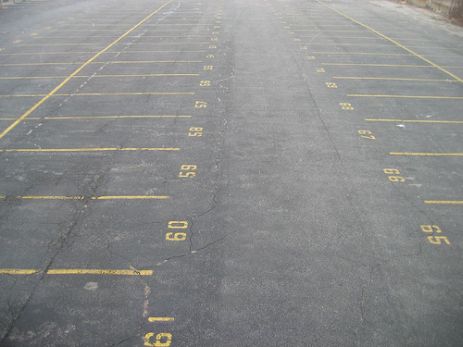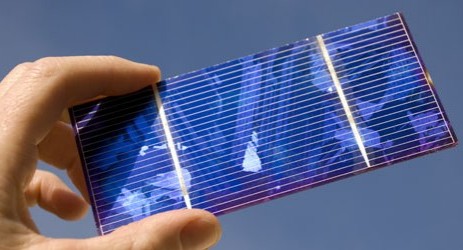Solar energy has long been one of the great hopes for fighting climate change and liberating the world from fossil fuels. And it’s easy to see why solar has captured the collective imagination: All those photovoltaic panels look so shiny, futuristic, clean, and green.
 Producing solar PV modules involves a witch’s brew of toxic chemicals. And spooky fog for good measure.That’s not quite the case. Any form of energy production has its dirty side and solar is no exception. While its impact is nowhere near that of coal-fired power plants, photovoltaic modules are made from a witch’s brew of toxic chemicals. Arsenic, cadmium telluride, hexafluoroethane, lead, and polyvinyl fluoride are just some of the chemicals used to manufacture various types of solar cells.
Producing solar PV modules involves a witch’s brew of toxic chemicals. And spooky fog for good measure.That’s not quite the case. Any form of energy production has its dirty side and solar is no exception. While its impact is nowhere near that of coal-fired power plants, photovoltaic modules are made from a witch’s brew of toxic chemicals. Arsenic, cadmium telluride, hexafluoroethane, lead, and polyvinyl fluoride are just some of the chemicals used to manufacture various types of solar cells.
None of this poses much, if any, threat during a solar panel’s working life. Solar modules — which are linked together to form a solar panel — for instance, are solid state and encased in glass or other protective material to keep them dry. The problem, as the Silicon Valley Toxics Coalition pointed out in a 2009 report, comes at the beginning and end of a panel’s life. Toxins potentially can be released during the manufacturing process — putting workers at risk — and when panels finally hit the scrap heap decades later.
“The solar PV industry has the potential to provide enormous environmental benefits,” according to the Silicon Valley Toxics report, “but the toxic materials contained in solar panels will present a serious danger to public health and the environment if they are not disposed of properly when they reach the end of their useful lives.”
The report compared the nascent but fast-growing solar industry to the electronics industry of past decades, which left a legacy of toxic pollution in the 1970s and ’80s. Unlike the early electronics industry — which in Silicon Valley was literally built on plumes of contaminated groundwater — solar companies are taking a more responsible approach, as any green business must.
Companies such as thin-film module maker First Solar have implemented take-back and recycling programs from the get-go. In labs at the University of Washington and elsewhere and at startups such as German’s Heliatek, researchers are working on developing so-called organic solar cells that generate electricity — albeit very inefficiently so far — without using toxic chemicals.
Then there are companies like BioSolar that aim to take the toxics out of solar by substituting environmentally friendly materials. The company, based in the Southern California city of Santa Clarita, is developing a plastic made from plant material — called bioplastic — that can be used as components in solar modules.
“The solar industry will have some of the same problems the electronics industry had unless we plan now,” says David Lee, BioSolar’s chief executive. “The solar industry involves a lot of toxic chemicals and we have to look at the lifecycle of these materials, from mining to manufacturing.”
That, of course, is easier said than done.
Most bioplastics are used to make disposable things — cups, plates, and trash bags — and are designed to be biodegradable. A bioplastic used in a solar cell is built to last for the typical 25-year life of the cell. It must be able to withstand the high temperatures generated by photovolatic modules and be water tight to keep moisture at bay.
BioSolar’s solution was to develop a proprietary process that strengthens petroleum- and toxin-free bioplastics so they can withstand temperature and moisture yet still be recycled or biodegrade in a landfill.
The company’s first product is Bio Backsheet, a replacement for the the material that forms the protective back of a solar cell. Standard so-called backsheets are usually made of polyvinyl fluoride, a chemical compound that can contain lead, chromium, cadmium, selenium, arsenic, and antimony.
“Existing backsheets are extremely hard to recycle,” says Lee, who holds a Ph.D. in electrical engineering. “The only way to get rid of them is by burying them in the ground.”
According to Lee, BioSolar’s Bio Backsheet can be safely recycled at the end of a solar module’s life or disposed of in a landfill. It will degrade — eventually I’ll have to check but I suspect I’ll just get a vague estimate — but without causing environmental contamination.
So far, BioSolar has only manufactured limited quantities of the Bio Backsheet, mainly so that solar module makers can test the product. Lee says BioSolar is working with several solar companies who are testing the product, which he declined to identify.
BioSolar is also developing bioplastics that can be used to replace chemical-based substrates that form solar cells.
[A customary word of caution about startups: It’s impossible at this stage to verify BioSolar’s claims or whether its products will live up to their billing. Founded in 2006, BioSolar was initially funded by family and funds before going public in 2007. It trades in the over-the-counter market and has accumulated losses of $2.6 million since its inception, according to financial filings.]
While BioSolar talks about greening the solar industry, the company’s pitch to photovoltaic module makers is just as much about saving money as the world. “We all know that everyone loves green products,” says Lee, “but unless the cost is less, manufacturers don’t pay much attention.”
Lee is aiming to produce bioplastic solar cell components at half the cost of their chemical-based counterparts. If he succeeds, solar power may finally start to live up to its clean, green billing.



